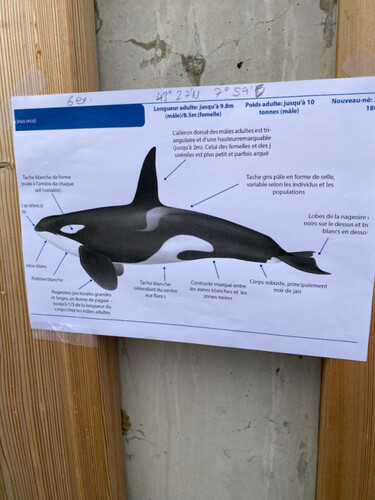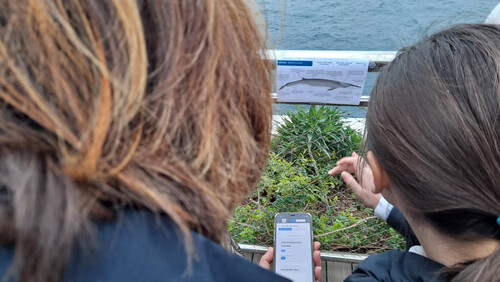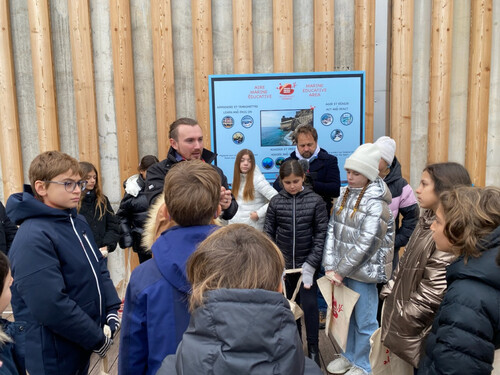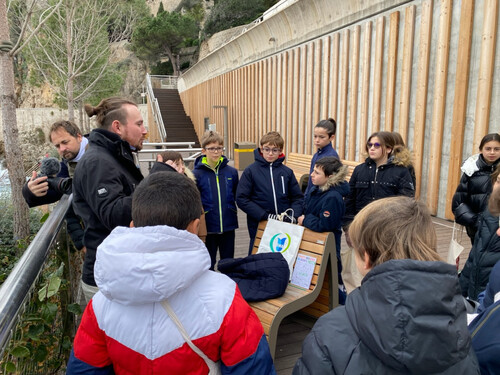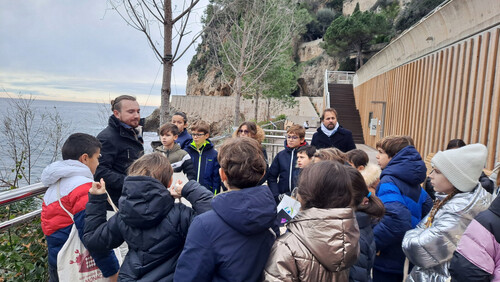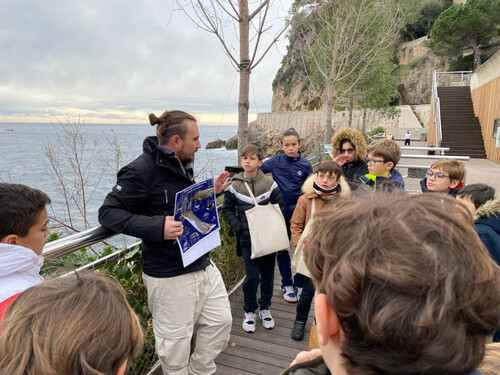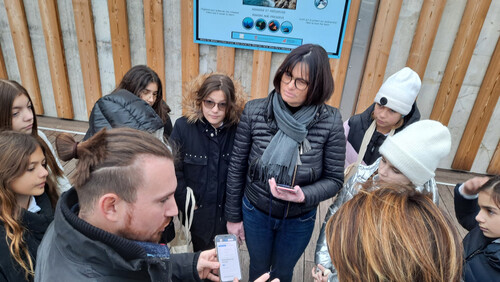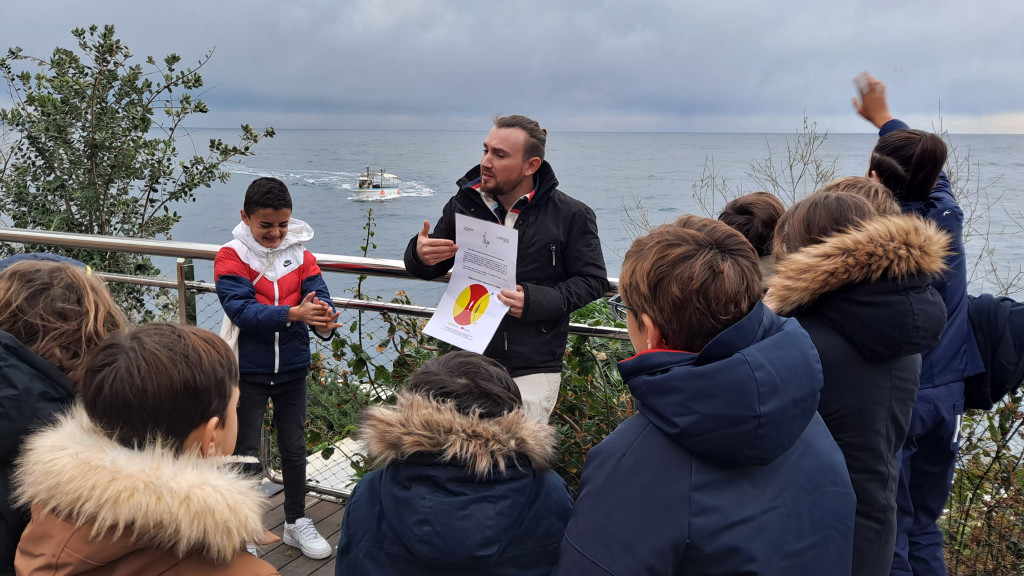
Marine Educative Area “Generation 5” : Whale Watching Best Practices
Marine Educative Area
This morning David Gamba, President of the Monegasque Sport Fishing Federation, Prevention and Recycling Officer at the Monegasque Sanitation Company and “Whale Watcher” spoke on the MEA site with students in the 7ème A class of Saint-Charles School.
After starting with raising awareness on the problem of waste and its management, he explained, in the context of the project for the year 2022-2023, what “Whale Watching” consists of and focused on the bad and good practices.
Among the bad, it was reminded that the harassment of cetaceans is punishable by law since 2021; that aerial or drone surveillance to spot them is prohibited; that their approach must respect the rules of good conduct; that swimming with them constitutes a risk of accident and transmission of diseases and that it's absolutely forbidden to touch them.
To prevent disruptions, David explained the rules of good conduct. Whale Watching activities are prohibited in the coastal strip up to 5 nautical miles. Approaching the animals first requires slowing down, observing their behavior (they come to the surface to breathe and their cycle must not be interrupted), not moving towards them and remaining at a distance of at least 100 meters. The time allowed to observe them is half an hour (only a quarter of an hour if a second boat arrives to observe them).
To ensure that a Whale Watching operator adopts good practices, it is therefore important to ensure that the “High Quality Whale Watching” label has been awarded to them! These good practices also apply to owners of boats operating offshore...
Emphasis has also been placed on the risk of collision. Each year, between 2 and 20 whales fall victim within the Pelagos Sanctuary. To limit them, the REPCET system was presented. It allows the reporting of the positions of cetaceans to be shared and received in real time within a community of subscribers.
Students then played the role of Whale Whatching observers. Photographs of cetaceans have been placed on the solarium site. For each of them, the number of individuals, their behavior, their geographical position were specified. Equipped with the mobile phones of the accompanying adults, they were able to report their observations in real time via the “Monaco Tagging Application”. They thus discovered the notion of “citizen science” allowing scientists to collect the data essential to their studies.
Another great morning of discovery which, in a fun way, allowed us to better understand good practices for the preservation of species!
Program supported by the Prince Albert II of Monaco Foundation and the Monaco Government.
You can also follow the actions of the AME on Instagram: AME_monaco

